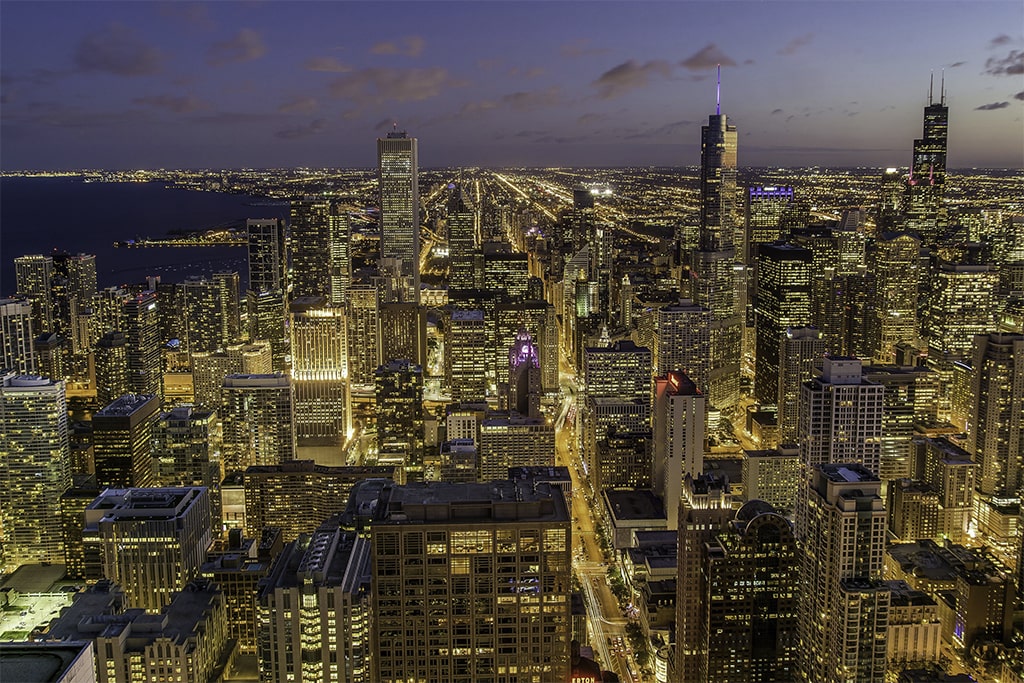
In the digital age, where first impressions are often formed through online interactions, the visual representation of businesses has taken center stage. Architectural photography, in particular, has emerged as a powerful tool for conveying the essence and identity of a business. From showcasing office spaces to capturing the allure of storefronts, this visual medium plays a pivotal role in shaping the perception of a brand. Let’s delve into the importance of architectural photography and explore tips for effectively capturing the unique ambiance of business environments.
The Importance of Showcasing Office Spaces and Storefronts:
First Impressions Matter:
In the intricate dance of commerce, where first impressions wield profound influence, the exterior of business functions as the overture to the entire symphony of the brand experience. Whether embodied in the sleek contours of a storefront nestled in a bustling urban landscape or the welcoming aura of an office entrance, this visual prelude holds remarkable significance. These external visual elements serve as the inaugural handshake with potential clients, toners, and prospective employees seeking an organizational home.
With its strategic blend of design, signage, and aesthetic appeal, the storefront is akin to a business’s calling card. It beckons passersby, inviting them to step into a world crafted by the brand. A well-designed and visually compelling storefront communicates professionalism, reliability, and a commitment to a positive customer experience. In an urban setting, it competes for attention amid a sea of distractions, making architectural photography a valuable tool to distill and capture the essence of this exterior allure.
Similarly, the office entrance is the threshold where visitors transition from the external world into the curated business environment. Architectural photography, with its ability to freeze moments in time, allows businesses to mold this transition into a positive and memorable experience. It is the first visual handshake extended to clients entering for a meeting, partners seeking collaboration, or job candidates arriving for an interview.
The significance of this initial visual encounter extends beyond mere aesthetics. It is a prelude to the narrative a business wishes to convey. An inviting office entrance may speak volumes about a company’s culture of warmth and collaboration, while a modern and sleek storefront signals innovation and a contemporary approach. These visual elements encapsulate the brand’s identity and values, acting as silent ambassadors communicating in the design language.
Architectural photography serves as a storyteller, capturing not just the physicality of the exterior but the intangible elements that make up the brand experience. The play of light on a well-designed storefront, the symmetry of an office entrance, and the carefully chosen angles that highlight architectural features contribute to the narrative that unfolds in the minds of those encountering the business visually for the first time.
In an era where digital impressions often precede physical ones, architectural photography bridges the tangible and the virtual. It transforms the exterior into an image, a snapshot frozen in time that extends beyond the immediate physical space. This visual representation, disseminated through various digital channels, becomes the face of the business, shaping perceptions and fostering anticipation.
The exterior of a business is not merely a façade; it is an invitation to engage with the brand’s story. By encapsulating the visual poetry of storefronts and office entrances, architectural photography becomes the pen that writes the prologue to this story. It allows businesses to craft a positive and memorable first impression, ensuring their visual overture resonates with the symphony they wish to orchestrate for their clients, partners, and employees.
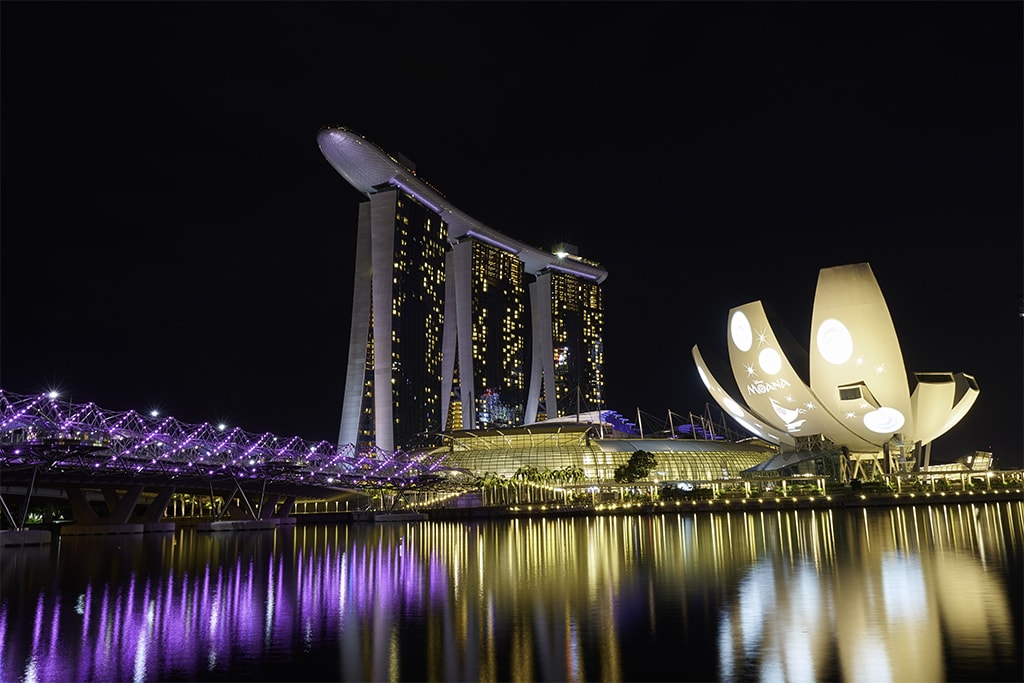
Reflecting Brand Identity:
The physical space a business calls home is more than just bricks and mortar; it is a living embodiment of the company’s identity, a tangible manifestation of its values, culture, and professionalism. A narrative unfolds in the intricate dance of architecture, design, and ambiance, and each element becomes a brushstroke contributing to the brand’s canvas. As a medium of visual storytelling, architectural photography emerges as a powerful means for businesses to articulate this narrative, inviting their audience to engage with a multi-faceted story that extends beyond products or services.
A business space’s architecture is akin to its identity’s structural skeleton. Whether it boasts the sleek lines of modernity, the timeless elegance of classic design, or an innovative blend of styles, architectural choices convey a deliberate message about the company’s ethos. A contemporary, open-concept layout may signal a commitment to collaboration and adaptability, while a more traditional design might evoke a sense of stability and tradition. Architectural photography, with its ability to capture the grandeur or subtlety of these choices, becomes a visual testament to the company’s architectural philosophy.
Design within the business space further refines this narrative, shaping the visual language communicating with employees, clients, and partners alike. Every detail, from the choice of furnishings to the arrangement of workspaces, becomes a deliberate expression of the company’s values. A design that prioritizes openness and transparency may foster a communication culture, while thoughtful interior elements can highlight the company’s commitment to creating an inspiring and comfortable work environment. By freezing these design choices in time, architectural photography transforms them into visual cues that resonate with an audience, inviting them to explore and interpret the nuanced details of the business’s visual identity.
The ambiance within a business space, the intangible atmosphere that permeates every corner, is the soul of its identity. It is the energetic hum of collaboration, the focused silence of individual work, and the collective heartbeat of a company’s culture. Capturing this elusive quality is an art, and architectural photography becomes the medium through which businesses can immortalize the dynamic essence of their space. The warmth of lighting, the acoustics of the environment, and the energy of the people within are all encapsulated in carefully composed images that convey the intangible yet vital spirit of the business.
Showcasing these architectural elements through carefully crafted images is a strategic choice for businesses seeking to communicate their brand story. The visual journey, presented on websites, marketing materials, or social media platforms, becomes a curated exploration into the company’s heart. Each image serves as a visual touchpoint, inviting the audience to decipher the language of design, feel the pulse of the ambiance, and connect with the company’s narrative on a deeper level.
In a world where consumers crave authenticity and connection, architectural photography becomes the bridge that links a business space’s physicality with its audience’s emotions and perceptions. Through this visual dialogue, businesses can transcend the confines of their physical environment, creating a shared experience that resonates with the values and aspirations of those who engage with their brand. Architectural photography thus becomes a portal, inviting the audience to step into the visual story of a business, where every architectural detail is a chapter, and every image is a page in the ongoing narrative of identity and connection.
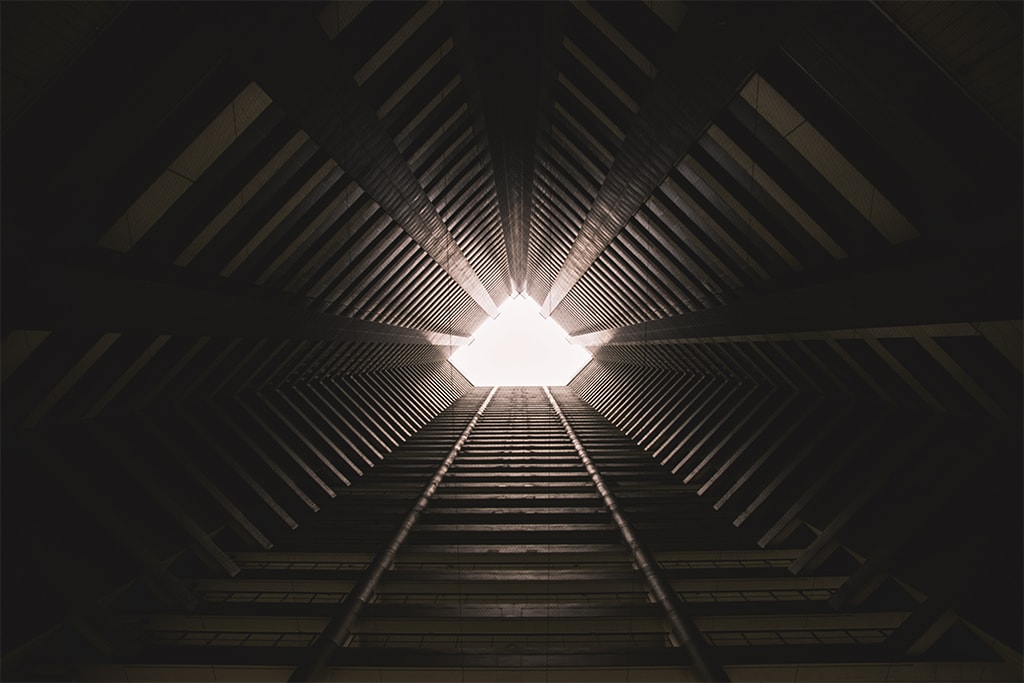
Enhancing Online Presence:
The importance of a robust online presence must be addressed in an era where the digital realm is the primary arena for business engagement. Architectural photography emerges as a linchpin in cultivating a compelling digital identity, serving as a visual gateway for businesses to connect with their audience. This is more evident than on websites and social media platforms, where the judicious use of professionally captured images of office spaces and storefronts becomes a transformative force, elevating the visual appeal and narrative depth of a brand’s online assets.
A business’s website is its virtual storefront, the digital face that greets visitors from around the globe. When integrated thoughtfully into web design, architectural photography transcends the limitations of pixels and screens. Professionally captured images of office spaces and storefronts convey a sense of professionalism and attention to detail, instantly establishing a positive first impression. The visual aesthetics of a website play a pivotal role in user experience, influencing how visitors perceive the brand and shaping their journey through the digital landscape.
On social media platforms, where attention spans are fleeting and visual content reigns supreme, architectural photography becomes a dynamic tool for capturing and retaining audience interest. A well-curated feed featuring captivating images of a business’s physical spaces offers a glimpse into the brand’s personality. It humanizes the industry, allowing followers to connect with the tangible aspects of its identity. Whether showcasing the vibrancy of the workplace or the inviting allure of a storefront, these images serve as visual ambassadors, sparking curiosity and engagement among the digital audience.
The impact of architectural photography on a brand’s online presence extends beyond mere aesthetics. Professionally captured images communicate a commitment to quality and excellence, instilling confidence in potential clients and partners. They act as visual storytelling elements, offering a narrative thread beyond product descriptions or service offerings. This visual narrative invites online visitors to immerse themselves in the brand’s story, creating a connection beyond the transactional.
Moreover, architectural photography contributes to brand consistency across online platforms. The visual language established through these images creates a cohesive and recognizable identity. Consistency in visual representation fosters brand recall and reinforces the overall narrative, whether a visitor encounters the brand on its website, social media profiles, or other digital touchpoints.
As businesses vie for attention in the crowded digital landscape, the strategic use of architectural photography becomes a competitive advantage. It is not just about showcasing the physical spaces; it’s about using these visuals to tell a story, evoke emotions, and invite the audience into the world of the brand. Investing in professionally captured images pays dividends in the form of increased engagement, enhanced brand perception, and a memorable online presence that distinguishes a business in the digital cacophony.
Architectural photography is a cornerstone for businesses seeking to thrive in the digital age. Its significance is particularly pronounced on websites and social media platforms, where the visual narrative it crafts becomes a dynamic force in shaping audience perceptions and interactions. In a world dominated by digital interactions, the carefully curated visual story told through architectural photography becomes not just a window into the physical spaces of a business but a portal into its identity, values, and the compelling narrative that sets it apart in the vast online landscape.

Attracting and Retaining Talent:
The workplace environment has emerged as a pivotal factor for businesses striving to attract and retain top talent in a competitive job market. In the contemporary landscape, where the dynamics between employers and employees have evolved, the aesthetics and atmosphere of the workplace are no longer secondary considerations but integral components of the overall talent acquisition strategy.
Prospective employees, driven by a desire for meaningful work experiences, often seek promising roles and environments that inspire creativity, collaboration, and personal growth. In this quest for an ideal workplace, architectural photography becomes a compelling tool for businesses to showcase their office spaces’ unique aesthetics and amenities, thereby contributing significantly to their broader employer branding strategy.
The importance of the workplace environment as a recruitment magnet cannot be overstated. Beyond the tangible aspects of job roles and responsibilities, job seekers increasingly consider the environment where they will spend a significant portion of their time. Architectural photography becomes a means to tangibly present companies’ workspaces, providing a visual narrative that complements job descriptions and goes beyond the traditional parameters of job listings.
By strategically leveraging architectural photography, businesses can showcase the aesthetics of their office spaces, offering a glimpse into the physical embodiment of their corporate culture. The visual representation of workspaces, whether characterized by modern, open-plan designs or traditional, collaborative layouts, becomes a compelling factor for prospective employees assessing the cultural fit of a company. Images of well-designed workspaces communicate a commitment to employee well-being and a dedication to fostering a positive work environment, influencing candidates’ perceptions and decisions.
Moreover, architectural photography serves as a tool to highlight the amenities and unique features that set a workplace apart. Whether it’s innovative meeting spaces, recreational areas, or thoughtfully designed common areas, these elements contribute to the overall work experience and can be robust attractors for talent. Capturing these features through professional photography transforms them from mere descriptions on a job listing to visual testimonials of the company’s investment in creating an engaging and employee-friendly workplace.
Architectural photography plays a crucial role in employer branding in crafting a compelling narrative. It goes beyond showcasing physical spaces; it communicates the intangible qualities that make a workplace distinctive. Images of collaborative workspaces may convey a culture of teamwork and innovation, while snapshots of communal areas may emphasize a commitment to work-life balance. These visuals become integral to the employer branding strategy, creating an authentic and appealing story that resonates with prospective employees.
In conclusion, the role of architectural photography in attracting top talent extends beyond providing a visual tour of office spaces. It is a strategic tool that contributes to a company’s broader employer branding efforts. By effectively capturing the workplace’s aesthetics, atmosphere, and unique features, businesses can create a visual narrative that aligns with their values and culture. In a talent landscape where candidates seek jobs and meaningful and enriching experiences, architectural photography becomes a conduit for businesses to visually articulate their commitment to providing an exceptional workplace environment, making them stand out in the competitive race for top talent.
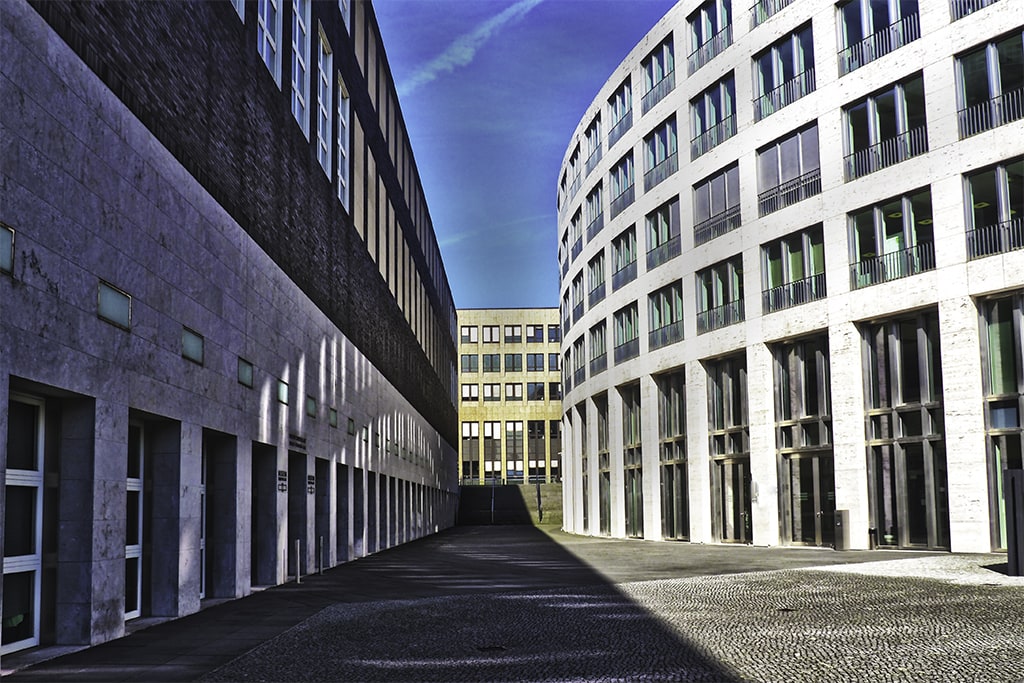
Tips for Capturing the Essence of Business Environments:
Understand the Purpose:
Embarking on a photographic journey, especially one aimed at capturing the essence of a business environment, demands a deliberate and thoughtful approach. Before the first shutter click, it is imperative to establish a crystal-clear understanding of the purpose behind the images. Each photograph should be a purposeful stroke in the larger canvas of visual storytelling. Are you seeking to emphasize the cutting-edge modernity of your office spaces, radiate the welcoming charm of your storefront, or encapsulate the collaborative spirit that defines your workplace culture? This initial clarity becomes the guiding North Star, steering the entire photographic process with intention and precision.
Understanding the purpose is the foundation for the entire visual narrative. For instance, if the goal is to highlight the modernity of office spaces, this may influence the choice of angles, lighting, and composition. The focus might shift toward capturing sleek lines, contemporary architecture, and innovative design elements contributing to a forward-thinking environment. Conversely, if the aim is to showcase the welcoming nature of a storefront, the photographic approach may prioritize capturing inviting entrances, warm lighting, and the ambiance that beckons customers.
This clarity is not just a technical consideration but a strategic one. It aligns the visual narrative with the broader goals and values of the business. A cohesive and purposeful photographic approach reinforces the intended message and creates a seamless connection between the imagery and the brand identity. It becomes a deliberate communication tool, conveying not just the physical attributes of the spaces but the intangible qualities that define the brand.
Moreover, understanding the purpose behind the images helps define the narrative arc. It shapes the story that the photographs collectively tell. For example, if the goal is to showcase the collaborative spirit within a workspace, the photographic series might delve into candid shots of team interactions, communal areas that foster collaboration, and the dynamic energy of a bustling office environment. Each image becomes a chapter, contributing to the overarching story of a workplace culture that values collaboration and teamwork.
This purpose-driven approach extends to the technical aspects of photography as well. Each decision is informed by the intended purpose, from the choice of equipment and lenses to the consideration of lighting conditions. For instance, capturing the modernity of space might involve experimenting with angles and lighting techniques to accentuate architectural features, while showcasing a collaborative spirit may prioritize capturing natural, unposed moments that reflect genuine interactions among team members.
Before venturing into the intricate dance of a photo shoot, defining the purpose behind the images is not just a preliminary step; it is a strategic imperative. This clarity becomes the anchor that grounds the entire photographic process, ensuring that every image captured contributes meaningfully to the intended narrative. Whether the goal is to showcase the aesthetics of a storefront, the modernity of an office, or the collaborative spirit within, understanding this purpose becomes the compass that guides the photographer toward creating a visual story that resonates authentically with the brand and its audience.
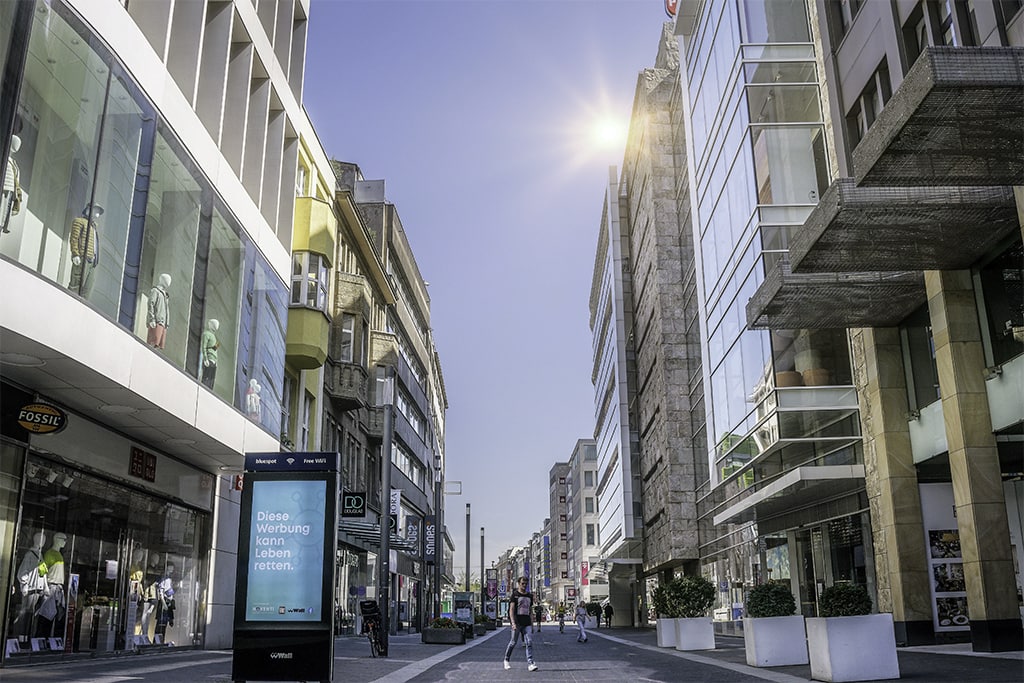
Consider Lighting Conditions:
In architectural photography, lighting is paramount, wielding the power to transform a mundane space into a captivating visual narrative. Whether utilizing the gentle touch of natural light or orchestrating the strategic interplay of artificial illumination, carefully managing lighting is the key to unlocking a structure’s unique character and ambiance. With its dynamic qualities, natural light can infuse warmth and life into a space, while well-placed artificial lighting serves as a sculptor’s tool, chiseling out intricate details and emphasizing specific architectural features. Moreover, the consideration of time-of-day in architectural photography becomes a dynamic dance with the sun, orchestrating a play of shadows and highlights that significantly shapes the mood and character of the images.
Natural light, harnessed skillfully, can elevate the visual appeal of architectural photography. The warmth of the sun, streaming through windows or casting soft shadows across a facade, can imbue a space with a natural radiance. The play of sunlight throughout the day creates a dynamic interplay of light and shadow, highlighting architectural nuances and textures contributing to the overall aesthetic. Morning light, with its soft and diffused quality, may enhance the gentle contours of a building, while the warm hues of the golden hour during sunset can cast a captivating glow, adding a touch of magic to the scene.
On the other hand, artificial lighting is a versatile tool in the photographer’s toolkit, allowing for meticulous control over the visual elements within the frame. Thoughtfully placed artificial lights can draw attention to specific architectural features, creating a focal point within the composition. This particularly highlights intricate details, textures, or design elements that may be overshadowed in natural light alone. The careful interplay of ambient and artificial lighting can also contribute to a balanced and harmonious visual narrative, ensuring that every facet of the space is showcased with intention.
Time-of-day considerations add another layer of complexity to the photographer’s decision-making process. The sun’s changing position throughout the day alters the quality and direction of light, influencing the overall mood of the images. For instance, photographing a building during the softer morning light may evoke a sense of tranquility and freshness, while capturing the same structure during the dramatic hues of a sunset can infuse the scene with warmth and a touch of drama. The photographer must consider the architectural elements they want to emphasize and choose the optimal time of day to achieve the desired visual impact.
Lighting in architectural photography is a nuanced dance requiring technical expertise and an artistic sensibility. Natural light and artificial lighting are not just sources of illumination; they are tools for sculpting the visual narrative, shaping the mood, and accentuating the unique features of a space. Time-of-day considerations add a layer of dynamism, allowing photographers to harness the transformative power of changing light conditions. In the hands of a skilled photographer, lighting becomes the brushstroke that paints the architectural canvas, bringing spaces to life and capturing the essence of the built environment in a way that resonates with the viewer.
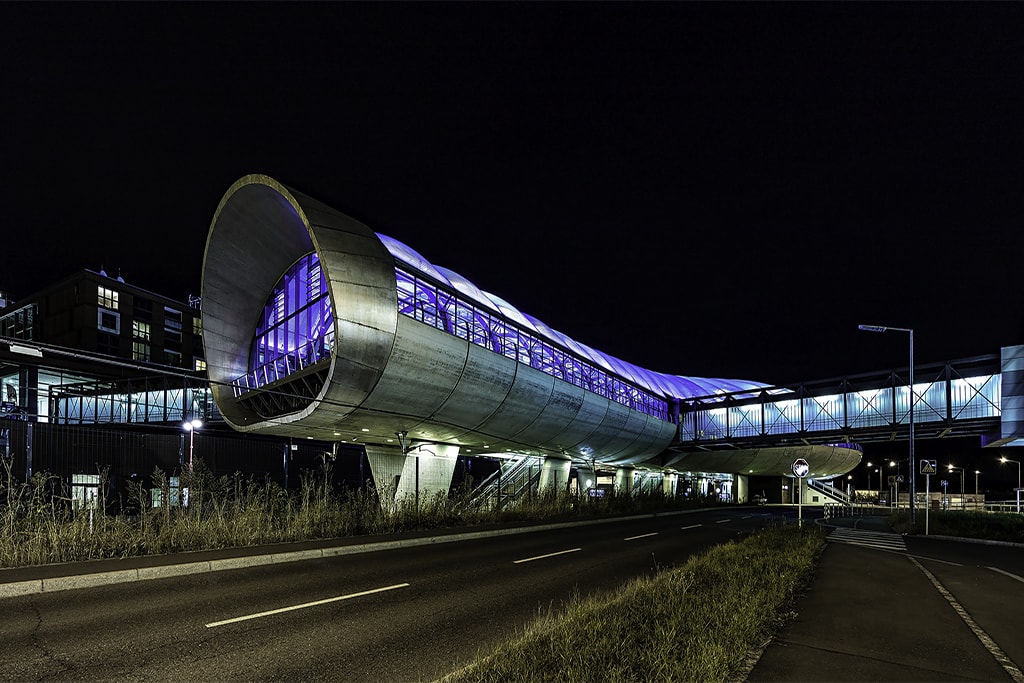
Emphasize Unique Features:
In the tapestry of business spaces, each thread weaves a unique story, and every stitch contributes to the distinctive identity of a workplace. From the external facade that catches the eye to the innovative interior design that defines the atmosphere within and even the panoramic views that extend beyond the office windows — every business environment harbors distinctive features that set it apart. In architectural photography, the key to capturing the essence of a business lies in emphasizing these unique features. Each photograph becomes a deliberate brushstroke, an opportunity to showcase the exceptional and singular elements that contribute to the character of the space.
One of the primary tasks in architectural photography is to identify and amplify the standout features of a business environment. This involves a keen understanding of what makes the space unique — the architectural details, the layout, or the overall design philosophy. An impressive facade, for instance, might be characterized by bold lines, intricate patterns, or innovative use of materials. Emphasizing these elements in photographs serves not only to visually engage the audience but also to communicate the architectural personality of the business.
Innovative interior design is another treasure trove of distinctive features waiting to be highlighted. Whether it’s the unconventional arrangement of workspaces, the thoughtfully curated decor, or the harmonious blend of functionality and aesthetics, these interior elements contribute to the overall ambiance and culture of the business. Architectural photography becomes a medium through which these features can be immortalized, allowing viewers to step into the visual narrative of the workplace and appreciate the unique design choices that define it.
Panoramic views from the office windows, whether overlooking a bustling cityscape or a serene natural setting, are invaluable assets that can be leveraged to showcase the broader context of the business environment. These views contribute to the space’s aesthetics and offer a glimpse into the surroundings that influence the daily experiences of those working within. Incorporating such panoramic views into architectural photographs adds depth and dimension, creating a visual connection between the internal and external aspects of the business environment.
The emphasis on distinctive features in architectural photography is not merely about aesthetics but storytelling. Each photograph becomes a narrative element, a chapter in the larger story of the business. The unique facade may symbolize the company’s innovative spirit, the interior design choices reflect its commitment to employee well-being, and the panoramic views speak to its connection with the broader community. By strategically highlighting these features, architectural photography becomes a means of articulating the business’s values, culture, and identity.
Every business space is a canvas of unique features waiting to be unveiled through the lens of architectural photography. Whether capturing the external facade, the innovative interior design, or the expansive views, the photographer’s task is to accentuate these distinctive elements. In doing so, architectural photography becomes a visual celebration, an ode to the singular qualities that make a business environment stand out in the crowded landscape. It transforms spaces into stories, inviting the audience to not just see but to appreciate and connect with the essence of the business in a way that goes beyond the surface and delves into the heart of its uniqueness.
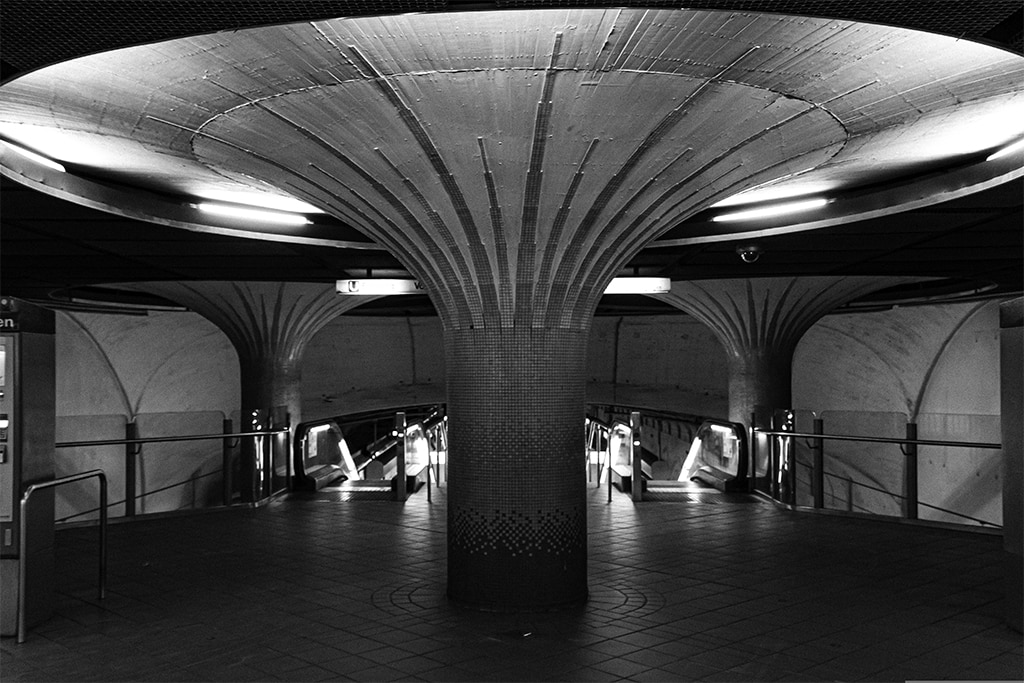
Capture the Flow and Functionality:
When approached with an expansive vision, architectural photography transcends the realm of static imagery and becomes a dynamic medium for capturing the essence of a business environment. It’s not just about freezing moments in time but about creating a visual narrative that encapsulates the flow and functionality of the space. This narrative extends beyond the physicality of walls and structures; it delves into the lifeblood of the workplace, showcasing how individuals move, interact, and collaborate within the designed environment. To achieve this, architectural photography must embrace the movement and energy that define the functionality of the space.
Collaborative workspaces, often the epicenter of a dynamic work environment, are a prime focus when aiming to capture the flow of a space. Architectural photography should frame the static arrangement of desks and chairs and strive to convey the vibrant activity within these areas. Candid shots of team discussions, impromptu meetings, or casual interactions between colleagues breathe life into the imagery, providing viewers with a sense of the bustling energy and collaborative spirit that characterizes the workspace.
Inviting common areas, whether lounges, breakout spaces, or recreational zones, is integral to modern office design. Architectural photography should actively highlight these areas, showcasing not only the aesthetics of the design but also the intended functionality. Photographs of employees engaging in informal discussions, taking a break, or collaborating in these communal spaces add depth to the narrative. Such images convey the physical layout of the common areas and capture the social dynamics and the sense of community fostered within these spaces.
In addition, architectural photography should meticulously focus on unique design elements that contribute to the overall functionality of the environment. This could include innovative furniture arrangements, ergonomic designs, or technology integrations that enhance the usability of the space. By emphasizing these design elements, the photographs become a testament to the thoughtfulness invested in creating a workspace that aligns with the practical needs of the individuals using it.
The aim is to go beyond showcasing the aesthetics of the space and to portray how it functions as a living, breathing entity. This involves intentionally exploring the ebb and flow of daily activities, the purposeful placement of elements that facilitate collaboration, and the strategic design choices that enhance the overall functionality. Architectural photography becomes a tool for storytelling, capturing not just the physical environment but the human experience within it.
Architectural photography that seeks to capture the flow and functionality of a space is a visual journey into the heartbeat of a business environment. By showcasing collaborative workspaces, inviting common areas, and unique design elements, the photographer creates a narrative that resonates with the dynamic nature of the workplace. In doing so, architectural photography becomes a dynamic and immersive experience, inviting the audience to step into the rhythm of the space and appreciate how design and functionality seamlessly intertwine to create an environment that looks good and works harmoniously for those who inhabit it.
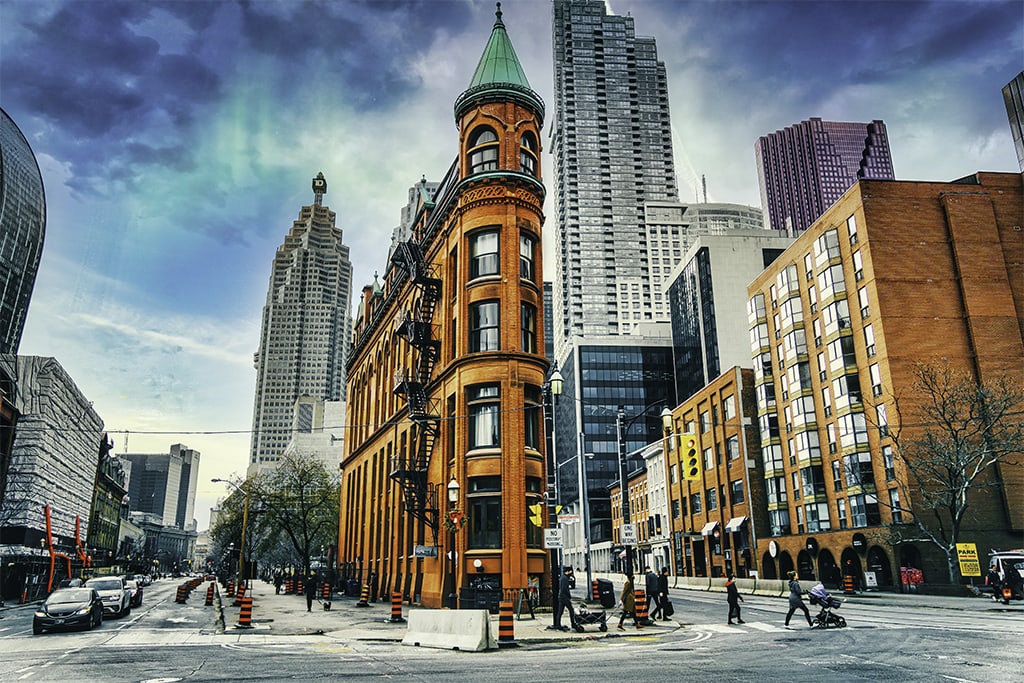
Incorporate People:
Incorporating individuals into architectural shots transforms the visuals from mere depictions of spaces into dynamic narratives infused with a human touch. This deliberate choice adds authenticity, warmth, and relatability to the imagery. Candid shots of employees immersed in their work, interacting in common areas, or engaging with customers at the storefront not only introduce faces to the spaces but also convey a palpable sense of vibrancy and activity within the business environment.
Candid shots of employees at work serve as windows into the business’s daily operations. Whether it’s a team huddled around a conference table brainstorming ideas or an individual focused on a task at their workstation, these images capture the essence of the workplace in action. The authenticity of candid moments fosters a connection between the viewer and the individuals within the frame, allowing for a more genuine understanding of the business’s culture and the dedication of its team.
Interactions in common areas are particularly compelling moments to capture. These spaces, designed for collaboration, relaxation, or impromptu discussions, come alive in photographs when individuals are portrayed as naturally engaged in these activities. Whether it’s colleagues sharing a laugh in a breakout space or having a casual discussion in a lounge area, these images showcase the functional aspects of the common areas and highlight the social dynamics and the sense of community fostered within the workplace.
When it comes to businesses with customer-facing aspects, such as storefronts or reception areas, images of employees engaging with customers add a personalized dimension to the visual narrative. Candid shots of employees assisting customers, engaging in conversations, or offering services provide a glimpse into the customer experience. These images convey not only the professionalism of the staff but also the human connection that lies at the heart of successful customer interactions.
Beyond the aesthetic appeal, incorporating individuals into architectural shots is a strategic storytelling element. The presence of people within the images humanizes the spaces, making them relatable and inviting. It allows the audience to envision themselves within the environment, fostering a sense of familiarity and connection. These visuals go beyond showcasing the physical attributes of the business; they become testimonials to the people who contribute to its vibrancy and success.
Architectural photography gains a profound depth when individuals are seamlessly woven into the visual narrative. Candid shots of employees interacting in common areas or engaging with customers infuse the imagery with life, authenticity, and a genuine sense of activity within the business space. This intentional inclusion of people transforms architectural photography from documentation of spaces into a compelling story of the individuals who shape and enliven those spaces. It becomes a visual journey, inviting the audience not just to see the environment but to experience the dynamic and human aspects that define the essence of the business.
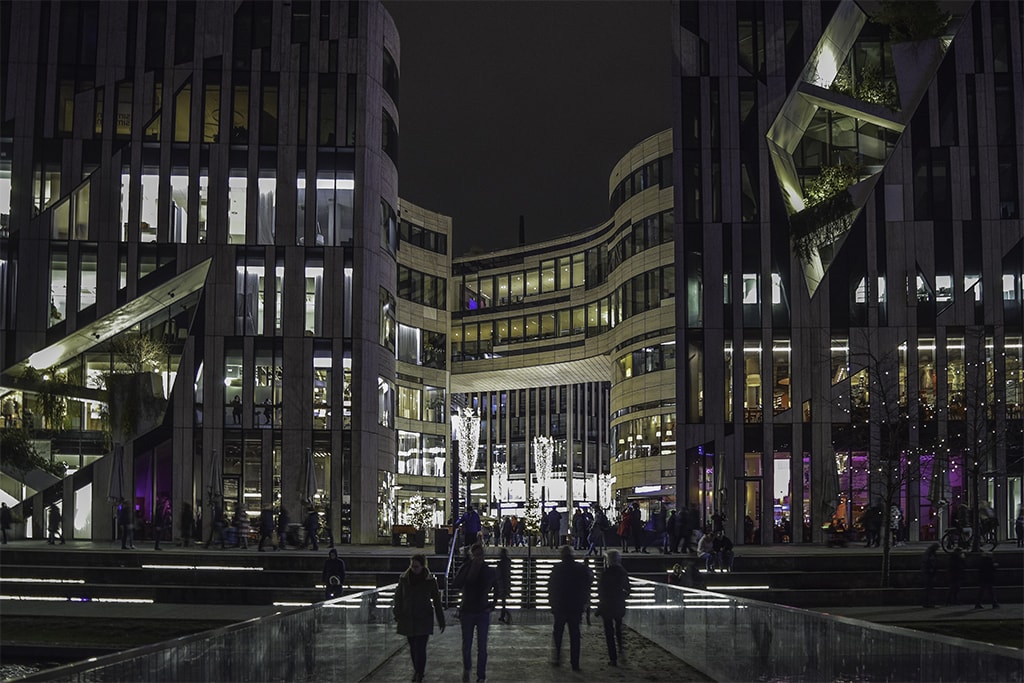
Maintain Consistency Across Platforms:
Consistency in using architectural images is a linchpin in establishing a business’s cohesive and recognizable visual identity. The strategic deployment of these visuals across various platforms, including the website, social media profiles, and marketing materials, requires meticulous attention to ensure alignment with the brand identity. Each image becomes a visual ambassador, conveying not just the physical attributes of the spaces but also contributing to the overall narrative of the brand. To achieve this, it is imperative to maintain a harmonious and consistent visual language that resonates across all business touchpoints.
The first step in ensuring consistency is establishing a visual style guide aligning with the overarching brand identity. This style guide should encompass critical elements such as color schemes, tone, mood, and the desired emotional impact. Architectural images should adhere to these guidelines, ensuring that the visual representation of spaces aligns seamlessly with the brand’s intended image. The architectural images should reflect and reinforce these characteristics, whether the brand is characterized by a modern and minimalistic aesthetic or a warm and inviting atmosphere.
Consistency extends to the technical aspects of the images as well. This includes maintaining a uniform quality of photography, whether in terms of resolution, composition, or color grading. Consistent image quality across platforms creates a polished and professional impression, reinforcing the brand’s commitment to excellence. It also contributes to a cohesive visual experience for the audience, regardless of the specific platform they engage with.
Strategic use of architectural images on the business website is fundamental to creating a compelling online presence. The images should be strategically placed from the homepage to specific product or service pages to complement the content and guide the visitor through a visually cohesive journey. The visual language established on the website should align seamlessly with the brand’s core identity, reinforcing key messages and creating a memorable impression.
Social media platforms, characterized by their dynamic and visually driven nature, are powerful channels for showcasing architectural images. Consistency in visual style across these platforms contributes to brand recognition and reinforces the overall narrative. Whether on Instagram, Facebook, or other platforms, the images should maintain a unified aesthetic, creating a cohesive feed that tells a compelling story about the business.
In marketing materials such as brochures, pamphlets, or digital campaigns, architectural images should be used strategically to reinforce key messaging. Consistency in visual style ensures that these materials align with the broader brand identity and contribute to a seamless and impactful brand experience. Whether in print or digital formats, architectural images become integral components of the storytelling process, conveying the values and unique attributes of the business.
The consistency in using architectural images across different platforms is not just a matter of aesthetics; it is a strategic imperative for building a solid and unified brand presence. Businesses create a cohesive visual language that resonates with their audience by ensuring that the visuals align with the brand identity and are used consistently on the website, social media profiles, and marketing materials. This consistency reinforces the brand’s identity, fosters brand recall, and establishes a memorable and impactful visual narrative that extends across the diverse landscape of the business’s digital and physical touch points.
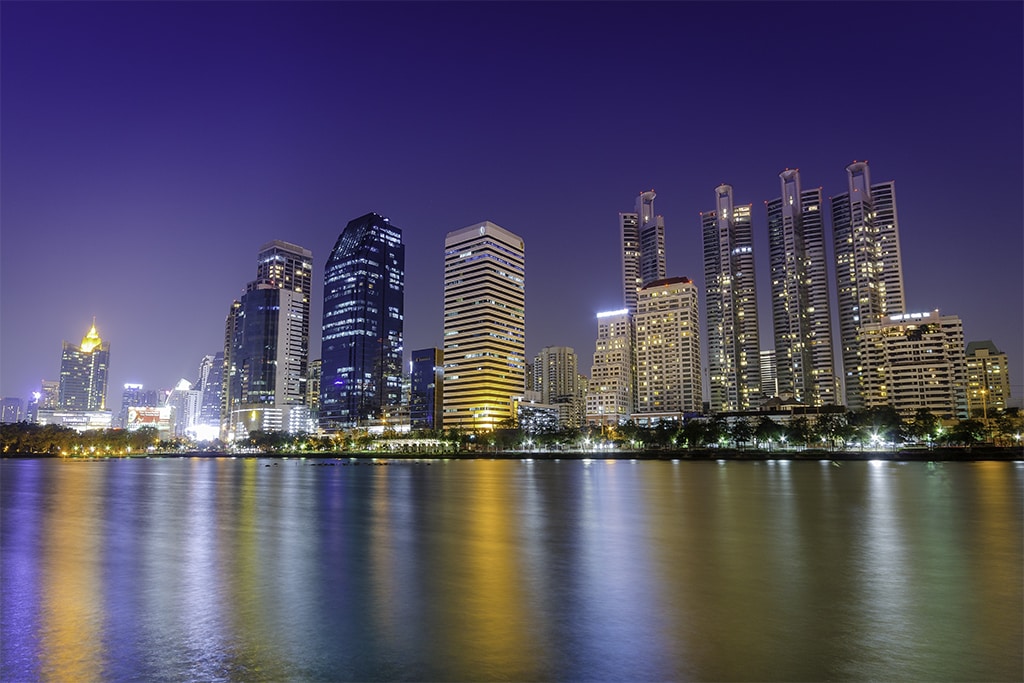
Consider Professional Assistance:
The proliferation of smartphones with increasingly sophisticated cameras has undoubtedly democratized photography, enabling individuals to easily capture high-quality images. However, when it comes to capturing the intricate details and nuanced essence of complex architectural spaces, the task often requires professional expertise beyond the capabilities of even the most advanced smartphone cameras. In architectural photography, where precision, composition, and an understanding of lighting are paramount, hiring a skilled photographer with specialized experience becomes a strategic decision to ensure the best possible results.
Architectural photography is a specialized field that demands a keen eye for detail and an understanding of the unique challenges posed by different spaces. Professional photographers specializing in architecture bring a wealth of knowledge and technical skills. They possess the expertise to navigate complex compositions, manage diverse lighting conditions, and capture the essence of a space in a way that communicates its unique character. This level of proficiency is honed through years of experience working with various architectural styles, spaces, and lighting scenarios.
One of the distinctive advantages of hiring a skilled architectural photographer is their ability to understand and interpret the design intent of a space. They approach each project with a trained eye, recognizing the architectural elements that define a space and strategically framing them to convey the intended message. Whether it’s emphasizing the clean lines of modern design, capturing the historic charm of a heritage building, or showcasing the functionality of a workspace, a skilled photographer brings a depth of understanding that goes beyond the technical aspects of photography.
Architectural photography often involves working with diverse lighting conditions, both natural and artificial. Professional photographers possess the knowledge and equipment to expertly manage these conditions, ensuring that every detail is captured accurately and clearly. They understand how light interacts with different materials and surfaces, allowing them to highlight architectural features and create images that resonate with a sense of depth and texture.
The post-production phase is another critical aspect where professional photographers shine. Their expertise in image editing and retouching ensures that the final images meet the highest standards. From color correction to enhancing details, professional photographers bring finesse to the editing process that elevates the overall quality of the images.
While smartphone cameras have empowered many to become adept at capturing everyday moments, the complexities of architectural photography necessitate a level of skill and understanding that professional photographers uniquely possess. When tasked with capturing the essence of architectural spaces, whether for business promotion, marketing materials, or documentation, the decision to hire a skilled photographer becomes an investment in the quality and impact of the visual narrative. The specialized expertise they bring to the table ensures that the unique character of architectural spaces is captured and artfully communicated, creating images that resonate with authenticity and visual sophistication.
Conclusion.
Architectural photography is a visual storyteller for businesses, narrating tales of identity, culture, and professionalism. Companies can create a lasting impression that resonates with clients, employees, and the broader audience by effectively showcasing office spaces and storefronts. With careful consideration of purpose, lighting, unique features, and the human element, businesses can leverage architectural photography to frame their success and stand out in the visually competitive business landscape.


Recent Posts
In shadows cast by love's deceitful guise,He wandered blind, his heart the captive prize.Through realms unknown, where truth remained concealed,He followed trails of falsehood, unrevealed. Blinded...
Prepare to be amazed as the MCAS Cherry Point Air Show returns on May 11-12. This annual event, hosted by the Marine Corps Air Station (MCAS) Cherry Point in North Carolina, promises a weekend of...